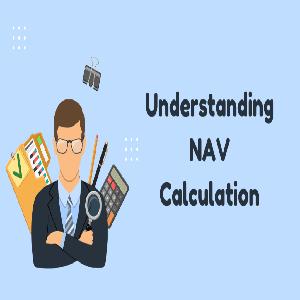Look Beyond NAV Numbers to Asset Quality
New investors with significant wealth frequently focus on the net asset value (NAV) of funds, yet the quality of the assets contributing to that number is far more important. Rather than simply pursuing low NAVs, which can be misleadingly seen as "bargains," it's essential to investigate the fund's holdings. Do these consist of high-quality bonds, reputable blue-chip stocks, or specialized options like private equity? For instance, a fund boasting a higher NAV that is backed by reliable, dividend-producing companies is typically more advantageous than a fund with a lower NAV filled with unpredictable small-cap stocks—particularly if you aim for consistent wealth growth instead of risky, short-term profits.

Use NAV Trends to Spot Manager Consistency
Daily variations in NAV are not as crucial as looking at long-term trends; however, for affluent newcomers, consistency showcases the skill of fund managers. Analyze the fund’s NAV over a period of 1 to 3 years in comparison to its benchmark (like the S&P 500 for equity funds). Is the NAV steadily increasing, even when markets are volatile? Steer clear of funds with unpredictable NAV changes, as this could indicate that the manager is opting for risky, short-term trades that don’t support wealth preservation goals. A consistent upward trajectory, even if gradual, indicates that the manager is focused on sustainable value creation.

Align Holdings with Your Investment Objectives
Fund holdings represent more than a mere list—they illustrate the fund’s compatibility with your portfolio. For investors focused on high consumption, ensure the holdings match your investment priorities: If your aim is to blend growth with ethical considerations, seek out funds invested in ESG (environmental, social, governance) companies. If passive income is your priority, look for funds heavily invested in sectors known for dividends (such as utilities and consumer staples). Avoid funds with major holdings that overlap with your current investments (e.g., if you already own tech stocks, stay away from funds heavily weighted in those areas)—diversification is vital for safeguarding your wealth.
Evaluate Top Holdings to Assess Concentration Risk
The top 10 holdings of a fund can highlight concentration risk, which poses a threat to wealthy investors. If a large portion (40%) of the fund’s assets is concentrated in just three companies, a decline in those firms could significantly impact your investment. Instead, opt for funds where the leading holdings comprise 20-30% of total assets—this strikes a balance between growth potential and stability. For example, a global equity fund that diversifies its top holdings across technology, healthcare, and consumer goods is safer than one concentrated in a single area like cryptocurrency.
Connect Holdings with Your Liquidity Requirements
Affluent investors often require quick access to funds for seizing opportunities or addressing emergencies. Investigate whether a fund’s holdings are liquid: Can it quickly sell assets without significantly affecting prices? Avoid funds with substantial investments in illiquid assets (like real estate investment trusts that come with long lock-up periods or private equity). Such funds may struggle to fulfill redemption requests, making it challenging for you to access your money when necessary. Favor liquid holdings (such as large-cap stocks and government bonds) to ensure your investment meets your liquidity needs.






